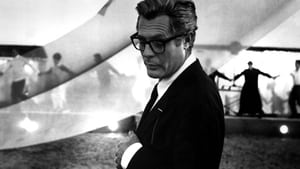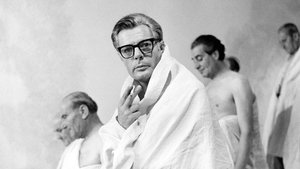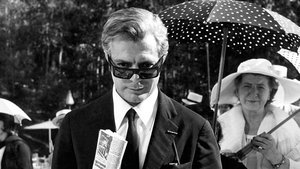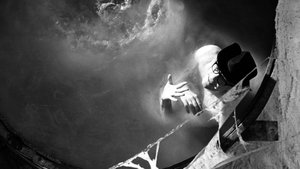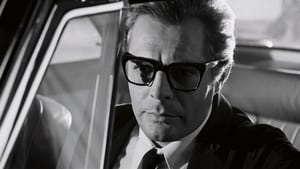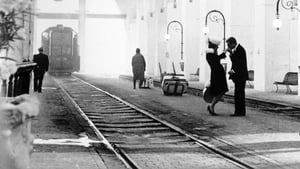Contact: info@alwanfilm.com
Video Sources 0 Views
- Watch trailer
- 8½


8½ 1963 Colorized
Synopsis
Table of Contents
Toggle8½ 1963 Colorized Review: A Cinematic Masterpiece of Self-Reflection and Artistic Expression

Introduction
8½ 1963 Colorized stands as a monumental achievement in cinema, a tour de force of self-reflection and artistic expression from the visionary Italian director Federico Fellini. This groundbreaking film defies traditional narrative conventions, offering audiences a surreal and introspective journey into the mind of its protagonist, Guido Anselmi, a renowned filmmaker grappling with creative block and personal turmoil. With its innovative storytelling, breathtaking visuals, and profound exploration of the human condition, “8½ 1963 Colorized” continues to captivate and inspire audiences around the world, cementing its status as one of the greatest films ever made.
Check The Full Colorized Movies List
Check Our Colorized Movies Trailer Channel
The Artistry of “8½ 1963 Colorized”
Fellini’s Directorial Genius
At the helm of “8½ 1963 Colorized” is Federico Fellini, whose bold and visionary approach to filmmaking revolutionized the medium and reshaped the boundaries of cinematic expression. Drawing on his own experiences and anxieties as a filmmaker, Fellini crafted a deeply personal and introspective work that transcends its autobiographical origins to explore universal themes of identity, creativity, and existential angst. Through his masterful direction, Fellini creates a rich tapestry of imagery and symbolism that invites viewers to immerse themselves in the labyrinthine depths of Guido’s psyche.
Mesmerizing Performances
Central to the film’s impact are the mesmerizing performances of its ensemble cast, led by Marcello Mastroianni in the role of Guido Anselmi. Mastroianni delivers a tour de force performance, capturing the inner turmoil and existential crisis of his character with remarkable depth and nuance. Supported by a talented ensemble that includes Claudia Cardinale, Anouk Aimée, and Sandra Milo, Mastroianni brings Guido’s world to life with authenticity and emotional resonance, drawing viewers into his innermost thoughts and desires.
Revisiting the Storytelling Mastery: Plot and Themes
A Journey of Self-Exploration
“8½ 1963 Colorized” unfolds as a surreal and dreamlike journey of self-exploration, as Guido Anselmi embarks on a quest to find meaning and inspiration amidst the chaos of his own mind. Trapped between reality and fantasy, past and present, Guido navigates a series of dreamlike encounters and surreal vignettes that blur the boundaries between memory and imagination. Through its fragmented narrative and elliptical structure, “8½” invites viewers to join Guido on his existential odyssey, grappling with questions of identity, mortality, and the nature of artistic creation.
Themes of Creativity and Alienation
At the heart of “8½ 1963 Colorized” are themes of creativity and alienation, as Guido wrestles with the pressures of artistic expectation and the fear of creative failure. Haunted by his past successes and consumed by self-doubt, Guido struggles to reconcile his public persona as a celebrated filmmaker with his private insecurities and doubts. Through his interactions with colleagues, lovers, and confidants, Guido confronts the limitations of his own ego and the isolating nature of artistic ambition, ultimately finding solace in the act of creation itself.
The Complex Relationships in Guido’s Life
Love and Desire
“8½ 1963 Colorized” explores the complex and often tumultuous relationships that define Guido’s life, from his passionate affairs with women to his fraught interactions with colleagues and collaborators. At the center of Guido’s emotional universe is his relationship with his wife, Luisa, whose unconditional love and support provide a source of stability and solace amidst the chaos of his creative turmoil. As Guido grapples with his own desires and insecurities, he must confront the consequences of his actions and the impact they have on those closest to him.
Mentorship and Influence
Central to Guido’s journey is his relationship with his mentor and confidant, the enigmatic film critic and intellectual, Guido’s interactions with Guido provide insight into the inner workings of his creative process, as well as the conflicting pressures and expectations that shape his artistic vision. Through their conversations and debates, Guido grapples with fundamental questions of identity and purpose, ultimately finding inspiration in the act of self-examination and introspection.
A Visual and Technical Triumph
Stylistic Innovation
“8½ 1963 Colorized” showcases Federico Fellini’s mastery of visual storytelling, with its striking cinematography, inventive camera work, and surreal set design. From the iconic opening sequence featuring Guido trapped in a nightmarish traffic jam to the breathtaking dream sequences that punctuate the film, every frame of “8½” is infused with a sense of wonder and spectacle that captivates the imagination. Through its evocative use of light, color, and composition, “8½” creates a rich and immersive visual experience that lingers in the mind long after the credits roll.
Early Colored Films Version
In a departure from convention, the filmmakers behind “8½ 1963 Colorized” experimented with an early colored films version of the movie, offering audiences a new perspective on its timeless narrative. This innovative approach to colorization adds depth and richness to the film’s visuals, enhancing its already immersive aesthetic and elevating the overall viewing experience.
Behind the Scenes of “8½ 1963 Colorized”
Fellini’s Creative Process
Behind the camera, Federico Fellini worked tirelessly to bring “8½ 1963 Colorized” to life with authenticity and integrity. Drawing on his own experiences as a filmmaker, Fellini infused the film with a sense of spontaneity and improvisation that reflects the fluidity of the creative process. From the casting of the actors to the design of the sets and costumes, every aspect of the production was crafted with meticulous care and attention to detail. Fellini’s uncompromising commitment to artistic vision and emotional truth shines through in every frame, as he transports viewers to a world of wonder and introspection.
Collaborative Collaboration
One of the most remarkable aspects of “8½ 1963 Colorized” is the collaborative spirit that infused every aspect of its creation. From the dedicated performances of the cast to the innovative contributions of the production crew, each member of the team played a vital role in bringing Fellini’s vision to life. Through their collective efforts, they created a cinematic experience that is as immersive as it is emotionally resonant, captivating audiences with its gripping narrative and unforgettable characters.
Legacy and Influence on Cinema
Critical Acclaim and Awards
Upon its release, “8½” received widespread critical acclaim for its bold storytelling, innovative visuals, and profound exploration of the human condition. The film went on to win numerous awards, including two Academy Awards for Best Foreign Language Film and Best Costume Design, cementing its status as a cinematic masterpiece. Over the years, “8½” has continued to inspire filmmakers and audiences alike, earning a place in the pantheon of great works of art.
Enduring Relevance
As we revisit “8½” in the present day, its themes of self-reflection, creativity, and existential angst continue to resonate with audiences around the world. In an age marked by uncertainty and upheaval, the film serves as a poignant reminder of the power of art to illuminate the human experience and offer solace in times of crisis. Through its timeless narrative and visionary aesthetics, “8½” invites viewers to explore the depths of their own imagination and embrace the transformative potential of artistic expression.
Where to Watch “8½ (1963) Full Movie”?
For those eager to experience the groundbreaking brilliance of “8½ 1963 Colorized” in its entirety, the film is readily available on various streaming platforms and home video releases. Whether you’re a cinephile seeking to expand your horizons or simply looking for a transcendent cinematic experience, “8½” promises to captivate and inspire audiences of all ages—a timeless testament to the enduring power of film as an art form.
In Conclusion
“8½” (1963) stands as a monumental achievement in cinema, a visionary masterpiece that continues to captivate and inspire audiences around the world. With its innovative storytelling, breathtaking visuals, and profound exploration of the human condition, Federico Fellini’s magnum opus transcends its time and place to speak to the universal truths that unite us all. As we revisit this cinematic treasure, let us celebrate its enduring legacy and embrace the transformative power of art to illuminate the human experience and inspire us to reach for new heights of creativity and self-expression.

